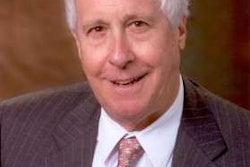The White House announced Friday, July 17, that the nomination of Anne S. Ferro as administrator of the Federal Motor Carrier Safety Administration has been sent to the U.S. Senate for confirmation. President Obama on June 4 announced his intent to nominate Ferro as FMCSA administrator. FMCSA safety officer and Assistant Administrator Rose McMurray has been serving as administrator since the Obama administration took office.
Ferro served as Maryland’s Motor Vehicle Administrator between 1997 and 2003, where the White House says she established a strong record in highway safety, regulatory compliance and agency leadership. Ferro also has extensive experience in driver and vehicle safety, having led the Maryland agency’s efforts to establish a graduated licensing program for new drivers in the state, as well as a model for older driver research.
A former Peace Corps volunteer in Cote d’Ivoire, Ferro is currently president of the Maryland Motor Truck Association and serves on several regional advisory committees relating to freight planning, highway safety and transportation funding. In 2008 she was selected as Maryland’s Port Woman of the Year. Ferro earned a master’s degree in public nanagement from the University of Maryland and a bachelor’s degree from St. John’s College in Annapolis.
The Teamsters on June 5 announced its opposition to Ferro’s nomination because of her support for the current hours-of-service rules. Teamsters President Jim Hoffa told Obama in a letter that Ferro is the wrong person to head FMCSA because of her “trucking-industry party line.” The Teamsters, Public Citizen, Advocates for Highway and Auto Safety, and the Truck Safety Coalition asked an appeals court March 9 to review the latest hours-of-service rules. The groups also sent a letter to U.S. Transportation Secretary Ray LaHood asking him to begin work on a new regulation.
Under FMCSA’s final rule, published Nov. 19 in the Federal Register, commercial motor vehicle (CMV) drivers may continue to drive up to 11 hours within a 14-hour nonextendable window from the start of the workday, following at least 10 consecutive hours off duty. And motor carriers and drivers may continue to restart calculations of the weekly on-duty limits after the driver has at least 34 consecutive hours off duty. The 11-hour and 34-hour rules were at the heart of Public Citizen’s second challenge to the hours rules.









